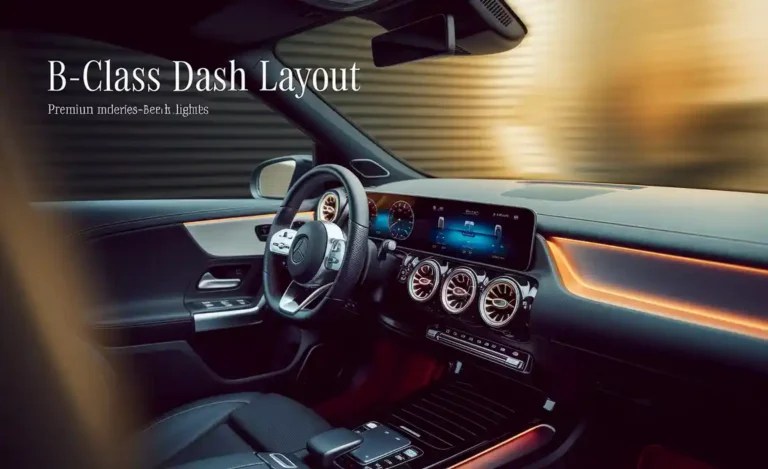B Class Buyer Guide: Your Ultimate Perfect Ride
The Mercedes-Benz B-Class is an excellent choice for a versatile, premium compact vehicle, offering practicality, comfort, and advanced technology in an accessible package. This guide breaks down everything you need to know to find your perfect B-Class, from understanding its features to making the smartest purchase decision.
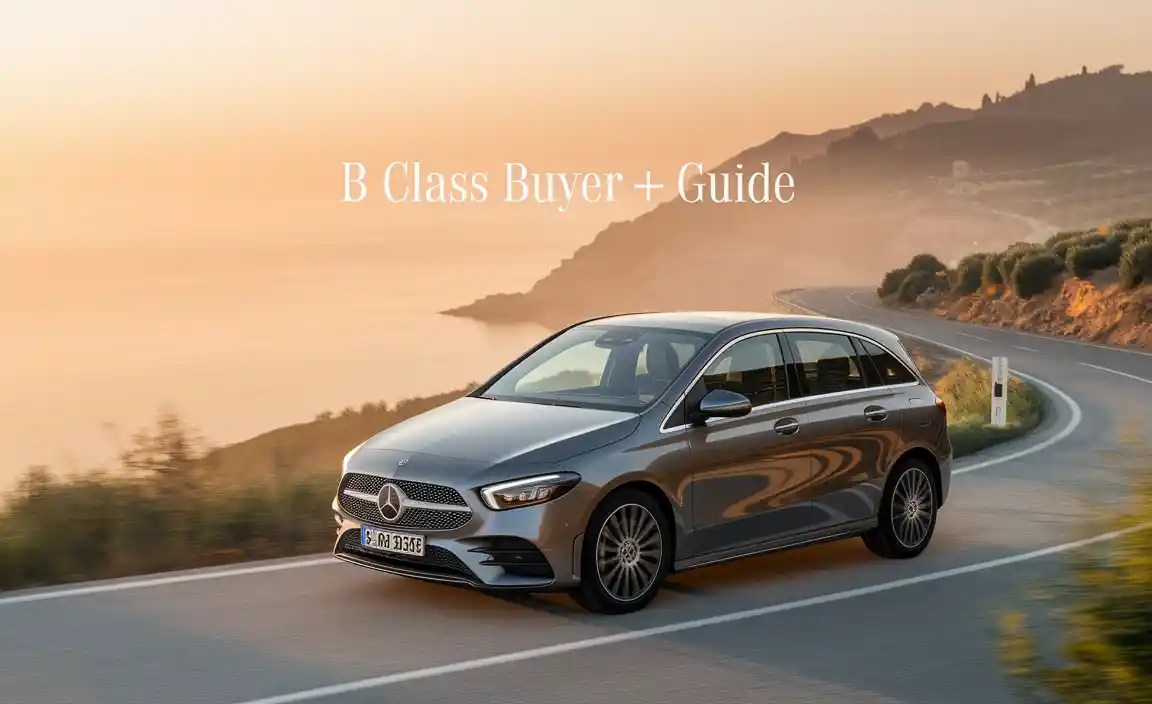
Choosing the right car can feel overwhelming, especially when you’re looking for that perfect blend of luxury, practicality, and performance. The Mercedes-Benz B-Class often comes up in these conversations, and for good reason. It’s a fantastic, multi-purpose vehicle that offers a taste of the Mercedes-Benz experience in a compact, user-friendly format. But with different generations and a host of features to consider, how do you make sure you pick the one that’s truly right for you? We’re here to demystify the Mercedes-Benz B-Class by walking you through every step. Get ready to find your ultimate ride.
What makes the B-Class so special? Imagine a car that’s as at home on a city commute as it is on a weekend getaway. This compact car packs a surprising amount of space and versatility, all wrapped in that signature Mercedes-Benz refinement. Whether you’re a first-time Mercedes buyer or looking to downsize without compromising on quality, the B-Class offers compelling reasons to explore it further. Let’s dive in and discover why it could be your perfect match.
Understanding the Mercedes-Benz B-Class
The Mercedes-Benz B-Class is a compact premium multi-purpose vehicle (MPV), or as some might call it, a compact sports tourer. It’s designed to offer a higher driving position than a typical hatchback, enhancing visibility and ease of access, while still maintaining a compact footprint for agile city driving. For decades, it has successfully bridged the gap between a conventional hatchback and a larger MPV or SUV, making it a unique proposition in the luxury compact segment.

Globally, the B-Class has been lauded for its smart packaging, comfortable ride, and the inclusion of thoughtful Mercedes-Benz innovations. It often serves as an entry point into the Mercedes-Benz family, offering premium features and build quality at a more accessible price point.
Key Characteristics of the B-Class
When you look at a B-Class, you’ll notice a few defining traits that set it apart:
- Tall Hatchback/MPV Design: It has a more upright stance than a typical hatchback, giving it a spacious interior feel and good headroom.
- Comfort-Oriented Ride: While still offering engaging driving dynamics, the B-Class generally prioritizes a comfortable and smooth experience for daily use.
- Practical Interior: The clever design maximizes interior space, offering ample legroom and a versatile luggage compartment.
- Premium Touches: Expect high-quality materials, intuitive infotainment systems, and advanced safety features synonymous with the Mercedes-Benz brand.
- Accessibility: The higher seating position makes getting in and out easier than in many lower-slung cars.
Generations of the B-Class: What to Expect
The Mercedes-Benz B-Class has evolved over its lifespan, with distinct generations offering different technologies, styling, and performance. Understanding these differences is crucial when you’re looking for a pre-owned model or comparing features across model years. We’ll focus on the most recent generations readily available on the used market.
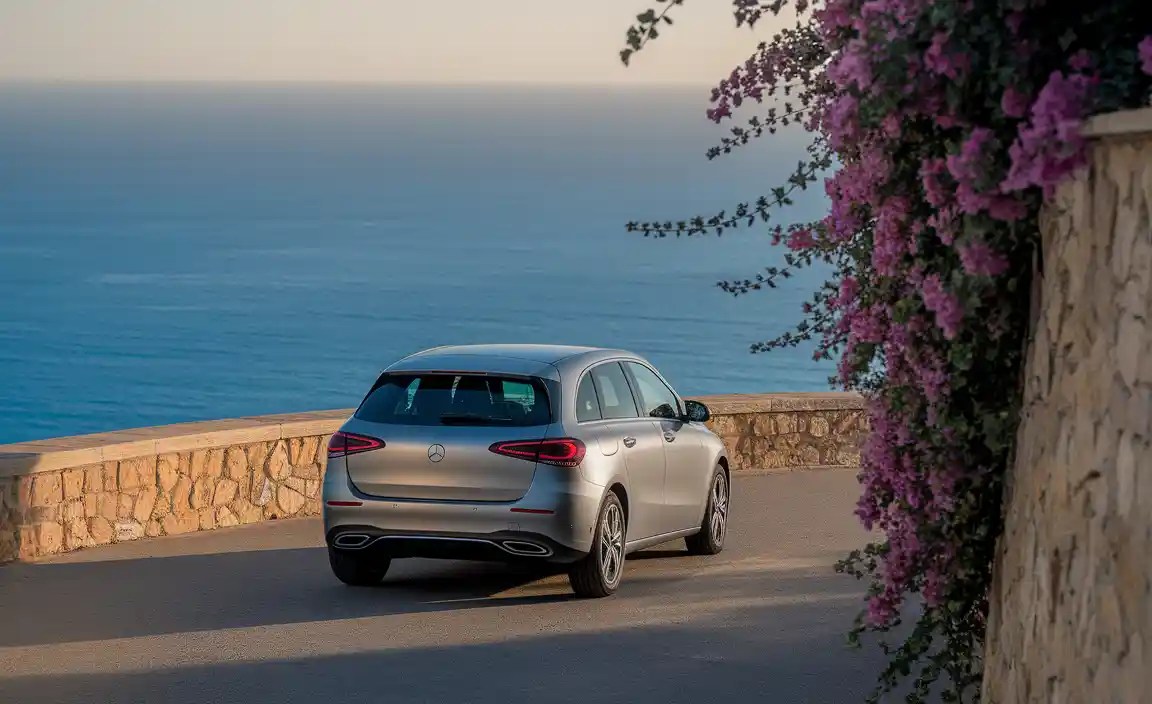
First Generation (W245): 2005–2011
The original B-Class (W245) laid the foundation for the model’s success. It was characterized by its sandwich construction floor, which housed the powertrain components and contributed to its tall, spacious interior. While it might feel dated in terms of technology compared to newer cars, the first-generation B-Class offered excellent practicality and a comfortable ride for its time.
Pros:
- Spacious interior for its class.
- Comfortable ride quality.
- Affordable entry into Mercedes-Benz ownership.
Cons:
- Basic interior and technology by today’s standards.
- Less engaging driving dynamics compared to later models.
- Safety features might be less advanced than modern vehicles.
Second Generation (W246): 2011–2019
The W246 generation marked a significant step forward for the B-Class. It moved away from the distinct sandwich floor, allowing for a lower vehicle profile and improved driving dynamics. Technology, safety, and interior design saw substantial upgrades, bringing it more in line with contemporary Mercedes-Benz models. This generation introduced the “all-electric drive” B-Class Electric Drive in some markets, a precursor to future electrification.
This generation is highly regarded for its balance of comfort, practicality, and the introduction of Mercedes-Benz’s COMAND infotainment system and an array of driver assistance systems.
Pros:
- Modernized interior and technology (e.g., COMAND infotainment).
- Improved driving dynamics and handling.
- More advanced safety features available.
- Sleeker exterior design.
Cons:
- Can be more expensive than the first generation.
- Infotainment system might still feel a bit less integrated than the very latest versions depending on the year.
Third Generation (W247): 2019–Present
The most recent B-Class (W247) continues the evolution, featuring a sharper design, the MBUX (Mercedes-Benz User Experience) infotainment system with intuitive voice control, and even more advanced driver assistance systems. It feels more like a premium hatchback than an MPV, offering a sportier demeanor while retaining practicality. This generation also saw the introduction of plug-in hybrid variants, reflecting Mercedes-Benz’s commitment to electrification.
Pros:
- Cutting-edge MBUX infotainment system.
- Advanced safety and driver assistance features.
- Sportier styling and driving experience.
- Available plug-in hybrid (PHEV) models for improved efficiency.
- Highly customizable interior with ambient lighting options.
Cons:
- Typically the most expensive option, especially new.
- Some might find the styling less MPV-like and more conventional hatchback.
Choosing Your B-Class Trim and Engine
Within each generation, Mercedes-Benz typically offers different trim levels and engine choices. These options significantly impact the car’s performance, features, and price. For the B-Class, you’ll most commonly find variations based on engine size and power output, often denoted by model numbers like B180, B200, B220, or B250 (with gasoline engines) and B180 CDI, B200 CDI, or B220 CDI (with diesel engines in older models). The third generation also introduced numbers like B180, B200, B220, and B250 for gasoline, and B180 d, B200 d, B220 d for diesel.
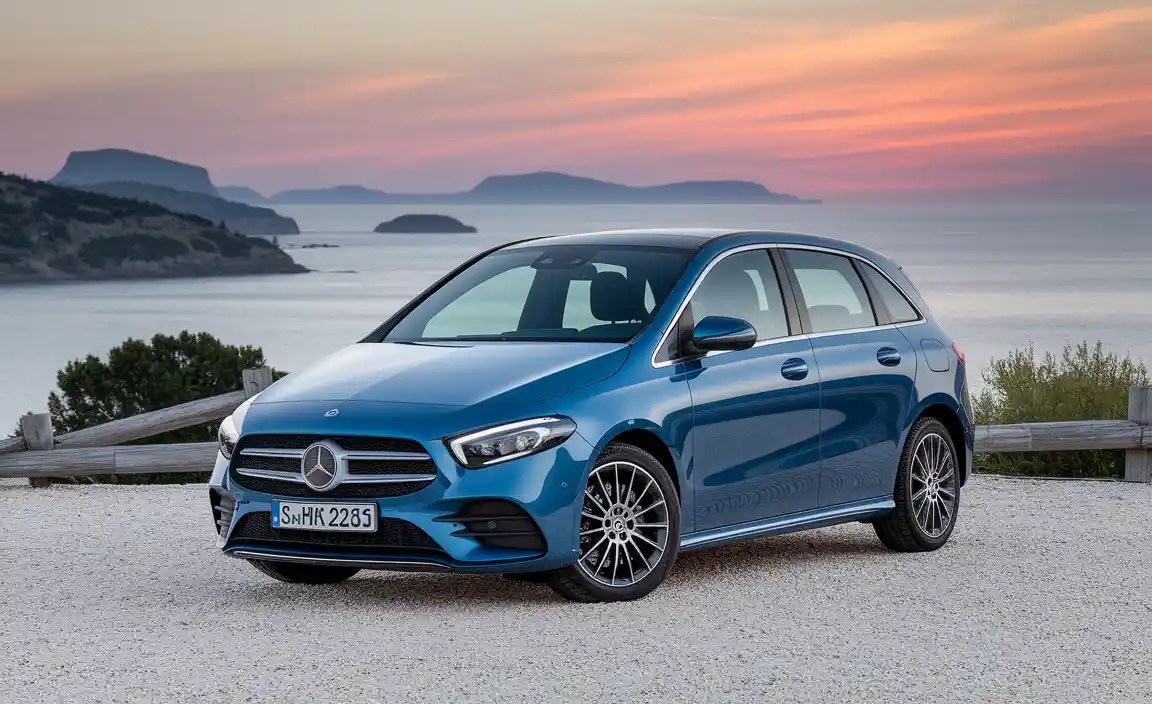
Engine Options Explained
Generally, B-Class models offer 4-cylinder engines, with a mix of gasoline and diesel powerplants available across different markets and generations. You’ll often find:
- Smaller Displacement Engines (e.g., B180, B200): These are typically more fuel-efficient, perfect for city driving and those prioritizing economy. They offer adequate performance for everyday tasks.
- Larger Displacement/Higher Output Engines (e.g., B220, B250): These provide more power and torque, offering a sportier driving experience and better acceleration. They are ideal if you do more highway driving or simply enjoy a bit more punch.
- Diesel Engines (CDI / d): In many markets, especially Europe, diesel engines were popular for their excellent fuel economy and torque, making them great for long-distance travel.
- Hybrid/Plug-in Hybrid (PHEV): Later generations, particularly the W247, introduced electrified options. These combine a gasoline engine with an electric motor, offering enhanced efficiency and the ability to drive on electric power alone for short distances.
When looking at used models, pay attention to the specific engine code or displacement. A higher number generally means more power. For instance, a B250 will be more potent than a B180.
Trim Levels and Packages
Mercedes-Benz often bundles features into different trim lines or optional packages. While the B-Class might not have the extensive naming conventions of its larger siblings (like AMG Line, Exclusive line within AMG), you’ll usually find:
- Standard Trim: The base offering, still equipped with Mercedes-Benz quality but fewer creature comforts or sporty enhancements.
- Sport/AMG Line (later models): These typically include sportier exterior styling cues (e.g., unique bumpers, wheels), sport seats, and sometimes a sportier suspension setup.
- Executive/Premium Packages: These often add desirable features like upgraded infotainment, ambient lighting, heated seats, and advanced safety systems.
Always check the specific vehicle’s specification sheet to understand exactly what features are included. VIN decoders can also be a valuable tool for precisely identifying a car’s original configuration.
Key Features to Look For in a B-Class
Beyond the basic model designation, several features can elevate your B-Class ownership experience. These are particularly important to consider when buying used, as not all vehicles will be equipped with the same options.
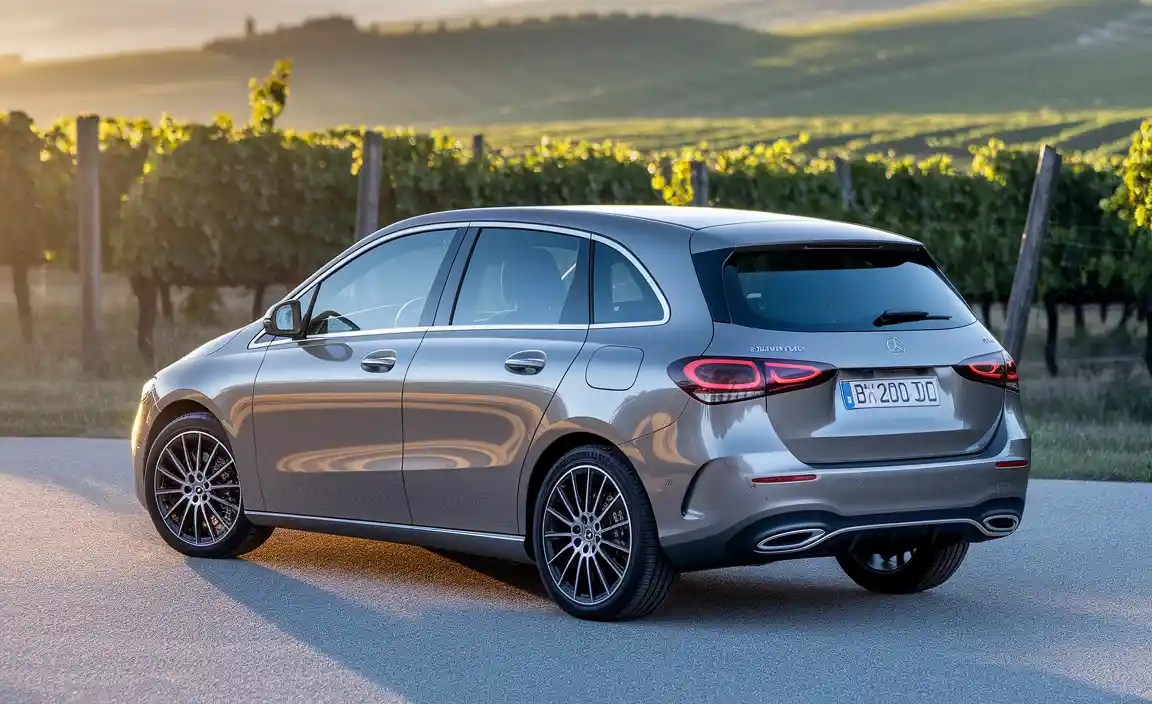
Infotainment and Connectivity
This is a major differentiator between generations:
- W245: Basic radio, CD player, and potentially an auxiliary input.
- W246: COMAND Online system often available, featuring a larger screen, navigation, Bluetooth connectivity, and sometimes smartphone integration (though less advanced than today).
- W247: MBUX system as standard or optional. This is a game-changer, offering dual screens, touch functionality, and impressive “Hey Mercedes” voice control. Look for models with Apple CarPlay and Android Auto integration.
Tip: Ensure the infotainment system is easy and intuitive for you to use. If buying used, ask to try out the navigation and Bluetooth pairing.
Safety and Driver Assistance Systems
Mercedes-Benz is renowned for its safety innovations. Even the W245 had advanced safety features for its time. Later generations, especially the W247, are equipped with a suite of advanced driver assistance systems (ADAS):
- Collision Prevention Assist Plus: Warns you if you’re getting too close to the vehicle in front and can automatically apply braking.
- Active Lane Keeping Assist: Helps keep the car within its lane.
- Blind Spot Assist: Alerts you to vehicles in your blind spots.
- Adaptive Cruise Control (DISTRONIC): Maintains a set distance from the vehicle ahead.
- Parking Assist PARKTRONIC: Helps with parking maneuvers.
- Reversing Camera: Essential for easy parking.
External Link: For more on modern automotive safety standards and technologies, the National Highway Traffic Safety Administration (NHTSA) provides comprehensive information: NHTSA Driver Assistance Technologies.
Comfort and Convenience
These features enhance the daily driving experience:
- Panoramic Sunroof: Creates an airy, open cabin feel.
- Keyless-Go: Allows keyless entry and start.
- Power-Adjustable Seats with Memory: Perfect for multiple drivers.
- Heated and Ventilated Seats: For year-round comfort.
- Ambient Lighting: Adds a touch of luxury and personalization, especially in W247 models.
Practicality and Versatility
Even in its compact form, the B-Class excels here:
- Foldable Rear Seats: Most B-Class models offer seats that fold flat, significantly expanding the cargo area. Some even have sliding or reclining rear seats.
- Adjustable Cargo Floor: Allows for a flat loading surface or deeper storage.
- “Easy-Vario Plus” System (earlier models): Offered exceptional flexibility in seating and cargo configurations.
Making Your Purchase: Tips for Buying a B-Class
Whether you’re eyeing a new or pre-owned B-Class, a smart buying process ensures you get the best vehicle for your needs and budget.
New B-Class Purchase
Buying a new W247 B-Class offers the latest technology, full warranty, and customization options.:
- Lease vs. Finance: Consider your driving habits and how long you plan to keep the car. Leasing can offer lower monthly payments, while financing leads to ownership.
- Negotiate Price and Options: Research the invoice price and desired options. Don’t be afraid to negotiate, especially at the end of the month or year.
- Understand the Warranty: Familiarize yourself with the manufacturer’s warranty coverage (powertrain, defects).
- Test Drive Thoroughly: Spend adequate time driving different engine variants and options to confirm your preference.
Pre-Owned B-Class Purchase
A used B-Class can offer exceptional value, providing Mercedes-Benz quality at a lower price point. This is where careful inspection and research are paramount.
- Set Your Budget: Include potential costs for maintenance, insurance, and registration.
- Research Model Years: Decide which generation and model year best fits your needs and budget based on features and reliability. Read reviews for specific model years.
- Vehicle History Report: Obtain a Vehicle History Report (e.g., from Carfax or AutoCheck) to check for accidents, title issues, and service history.
- Pre-Purchase Inspection (PPI): This is crucial. Take the car to an independent Mercedes-Benz specialist or a trusted mechanic for a thorough inspection before you buy. Mention specific B-Class known check points like transmission fluid, brakes, and any electronic system alerts.
- Check for Maintenance Records: A well-maintained car is key. Look for evidence of regular servicing, especially from a reputable Mercedes-Benz dealership or specialist.
- Inspect for Wear and Tear: Check the interior for stains, tears, or excessive wear. Examine the exterior for dents, scratches, and rust.
- Test Drive Critically: Listen for unusual noises, check how it accelerates and brakes, and ensure all electronics work.
Resource: A great resource for understanding vehicle history reports and what to look for can be found on U.S. government consumer information sites, often within the Department of Transportation or Federal Trade Commission sections.
Common B-Class Model Year Considerations (W246 & W247)
While the B-Class is generally reliable, specific model years and common issues are worth noting:
W246 (2011–2019)
- Transmission Issues: While not widespread, some reports of issues with the 7-speed dual-clutch transmission (7G-DCT) have surfaced. Regular fluid changes are vital.
- Electric System Glitches: Occasional electrical faults, such as warning lights on the dashboard or infotainment system glitches, can occur.
- Diesel Particulate Filter (DPF) Issues: Particularly for diesel models driven mostly on short trips, DPF regeneration might not complete properly, leading to blockages.
W247 (2019–Present)
- MBUX Software Updates: Early MBUX systems might have required software updates to iron out initial bugs. Ensure the system has the latest firmware.
- Small Oil Leaks: In some inline-4 engines, minor oil leaks from various seals have been reported. This should be addressed promptly.
- DCT Clutch Wear: Like many dual-clutch transmissions, proper maintenance is key.
Note: Regular maintenance according to the manufacturer’s schedule is the best way to prevent most issues across all generations. Always consult your owner’s manual for the recommended service intervals and types of fluids.
Maintenance & Ownership Costs
Owning a premium car like a Mercedes-Benz does come with different considerations for maintenance and costs compared to mainstream brands. However, the B-Class is often positioned as a more affordable entry point.
Routine Maintenance
Expect to follow the flexible service intervals prescribed by Mercedes-Benz, typically around every 10,000-15,000 miles or annually. This usually includes:
- Oil and Filter Changes: Essential for engine health.
- Brake Fluid Checks/Replacement.
- Air and Cabin Filter Replacements.
- Tire Rotations and Balancing.
- Inspection of Suspension, Steering, and Exhaust Systems.

